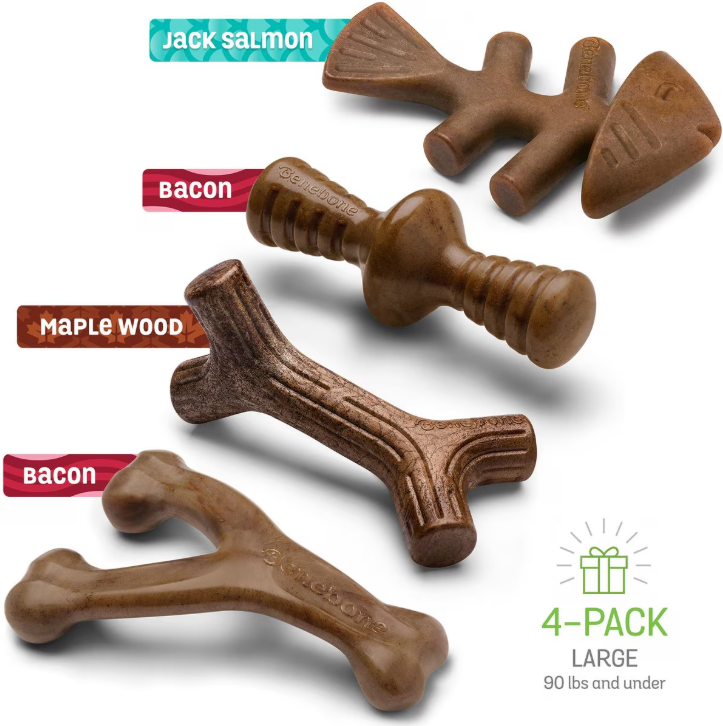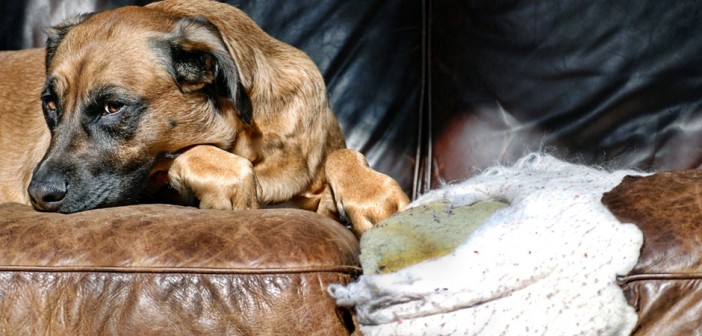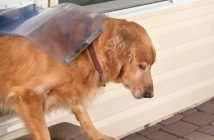Destructive chewing is a fairly common habit in dogs, and a seriously undesirable one. It is not only inconvenient for owners, but it can also be dangerous for the dog. Thankfully, destructive chewing is something that can be tackled fairly easily with some time and effort. Let’s take a look at why dogs tend to chew things and how you can combat destructive chewing in your dog.
Why is Your Dog Chewing?

One of the first steps to eliminating the destructive behavior is to understand why your dog is chewing in the first place! If your dog is still a puppy, then chewing is normal. Puppies naturally explore using their mouths and there is no limit to the things that your new pet will chew on!
A puppy’s desire to chew peaks at around 8 weeks and continues until around 9 months. However, in some dogs the behavior will continue well past this age, especially if the proper prevention and training techniques are not applied. It is up to you as a dog owner to teach the dog what sort of objects are acceptable for them to chew on, and which are out of bounds.
Why Does Chewing Become Destructive?

As a puppy, chewing is a natural habit which your dog finds soothing and which he or she will use as a way to burn off all of that energy. However, when chewing continues beyond the puppy stage it can become a major problem. Finding a chewed up shoe is one thing, discovering your leather sofa has a huge chew-hole is quite another.
There are three main causes of destructive chewing beyond the puppy stage, but it really boils down to a lack of appropriate training. These three common causes of destructive chewing are:
- Lack of Proper Supervision and/or of Preventative Techniques
- Lack of Exercise and/or Mental Stimulation
- Lack of Access To Appealing and/or Stimulating Toys
How to Address Destructive Chewing
Now that you understand why your dog has been engaging in this type of destructive behavior, you are in a better position to be able to deal with it by eliminating the contributing factors! This is going to be easiest with a puppy as you can teach them which items are appropriate to chew on and which are not. This comes down to proper supervision. If you are with your puppy, you can immediately give them feedback on their behavior!
When you see the puppy grab something inappropriate in their mouth, you can immediately interrupt them with a command such as ‘Leave It’ and direct them towards a more appropriate item, such as a chew toy. When you are unable to be there to supervise your puppy, you need to confine them. Crate training is an ideal option for this type of situation. Be sure to leave chew toys inside the crate to reinforce that those are appropriate items to chew.
You also need to make sure that you are providing your dog with a selection of toys that are appealing and stimulating. If you find that your dog is still opting to chew your shoes, despite having plenty of toys around, then you might be buying the wrong sort of toys.
Dogs have different preferences when it comes to toys, just like children do, so it may take some experimenting to find out which type are more appealing to your particular dog. We adore this Outward Hound Durablez Tough Snake – partially because they have about 6 squeakers, but there’s no stuffing and they last a really long time if you’ve got a serious chewer that you can’t give a regular plush toy to.
In addition, you should rotate your dog’s toys every few days to stop him from becoming bored. It is a good idea to have a selection of different toys on hand for your dog to choose from. Some of the toys should be interactive such as treat balls or slow feeders to keep your dog stimulated.

Benebone Multipack Durable Chew Toys
Tough, long-lasting, and proudly made in the USA, this Benebone multipack is perfect for power chewers. It features four uniquely shaped toys, each infused with real bacon, fish, or maple wood flavor. Designed to keep your dog engaged and satisfy their natural chewing instincts, it’s a fun and flavorful gift for your chew-happy pup.
You should also include some really good quality toys for chewing that are not going to be easily destroyed. The most durable dog toys are those made from hard rubber or fibrous rope, like this ever-popular, classic Kong dog treat toy.
While it can be really frustrating, destructive chewing is something that you can put a stop to with some diligent training. It is important that you supervise your dog, especially at a young age, so that you can intervene when they chew an inappropriate item. It can also help to make sure that your dog is not bored by providing a range of toys that the animal will find stimulating.
It is possible to stop destructive chewing, but it can take time and diligence.




